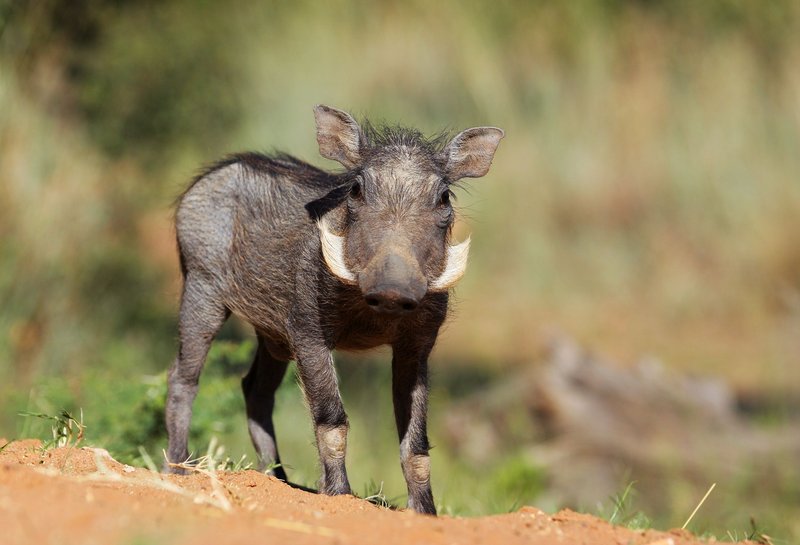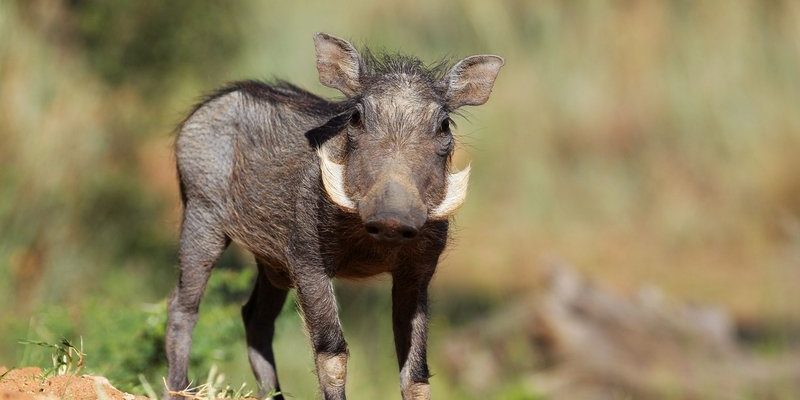
Imagine sitting down with a cup of coffee and discussing how animals think and act—it’s a bit like diving into the minds of these unique creatures. Warthogs have learned to adapt to their environments in ways that show they are more than just survivors. So, let’s take a closer look at just how smart these amazing animals really are.
The Brain Behind the Warthog
Warthogs have a brain size that generally correlates with their body size, which is a good indicator of intelligence in many species. When we compare them to other animals, their brains are quite efficient. This efficiency helps them engage in problem-solving, social interactions, and even memory tasks—skills that might surprise you.
Their intelligence can be likened to that of dogs, which are known for their ability to understand commands and recognize patterns. Warthogs use their brains to navigate their habitats, find food, and evade potential threats. This level of cognitive function reflects a strong connection between their brain physiology and their behaviors.
Social Structure and Communication
One interesting aspect of warthog behavior is their social structure. Warthogs typically live in groups called sounders, usually consisting of females and their young. Males are often more solitary, especially during mating season. Within these groups, they communicate with one another through a variety of vocalizations, body language, and facial expressions.
Honestly, you might not think about how animals convey messages, but warthogs have a whole repertoire of sounds to express themselves. For example, when they sense danger, they might grunt or squeal to alert others in their sounder. These social bonds are essential for their survival; young warthogs learn from older females, picking up on important life skills.
Memory and Learning Abilities
One of the most captivating aspects of a warthog’s intelligence is its *memory*—particularly when it comes to finding food. Warthogs can remember where they’ve found food sources in the past and return to these spots days or even weeks later. This ability to remember locations helps them survive in environments where food can be scarce.
Further, scientists have found that warthogs can learn from their experiences. For example, if a warthog encounters a dangerous predator in a certain area, it will likely avoid that area in the future. This kind of learning behavior is a sign of higher cognitive functioning and showcases their adaptability in the wild.
Problem Solving and Tool Use
You might be surprised to learn that warthogs exhibit problem-solving skills that go beyond what you’d expect. For example, they can figure out how to dislodge food that’s hidden underground or stuck in tree roots. Their ability to manipulate their environments speaks volumes about their intelligence.
In some instances, warthogs have been observed using their tusks to dig, often employing a technique that resembles “tool use.” This might not look like a human using a hammer, but it certainly shows that these animals have adapted their natural tools—namely, their tusks and snouts—to solve problems creatively.
Adaptations to the Environment
Warthogs also display intelligent adaptations to their harsh environments. They often take refuge in abandoned burrows of other animals to escape the heat or evade predators. This behavior demonstrates foresight—an understanding of their surroundings and what they need for survival.
Once inside, they can often navigate these tight spaces without getting stuck, thanks to their flexible bodies and spatial awareness. You might wonder how they know where to go; it’s all about experience and memory. Their ability to adapt showcases a level of smart thinking that helps them thrive in the unpredictability of the savanna.
The Role of Instincts in Behavior
While intelligence plays a significant role in how warthogs navigate their lives, instincts are also crucial. Their instincts help them recognize danger and respond accordingly. For instance, when threatened, warthogs often rely on their fight-or-flight response—choosing to flee to safety or face potential threats with their impressive tusks.
However, instincts do not overshadow their intelligence. Instead, the two often work hand in hand, allowing warthogs to make quick decisions based on their learned experiences and evolved abilities. Understanding this balance between instinct and intelligence helps paint a complete picture of their behavior.
So, how smart is a warthog? When you take a closer look, you realize that these creatures possess a remarkable blend of intelligence, social skills, and adaptability. Their ability to communicate, remember, solve problems, and adapt to their environment shows that they are far more than just tough animals in the wild.
In a world where we often underestimate the cognitive abilities of animals, warthogs stand out as a prime example of how complex and capable they can be. Next time you see a warthog, remember that there’s a lot more happening in that head of theirs than it might appear at first glance. Understanding their intelligence not only enriches our knowledge of nature but also deepens our appreciation for all creatures.

